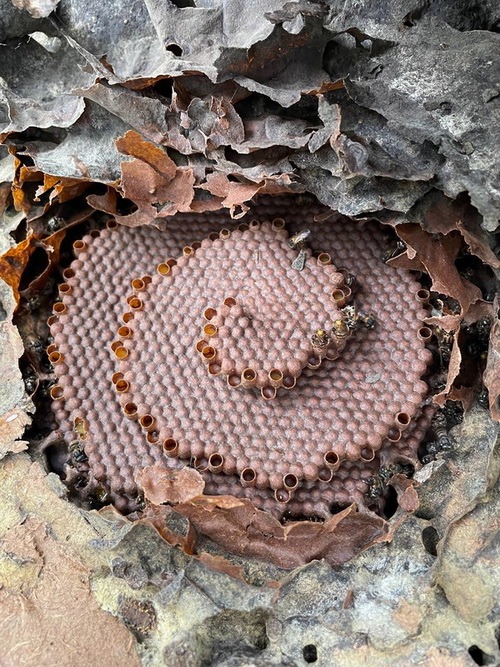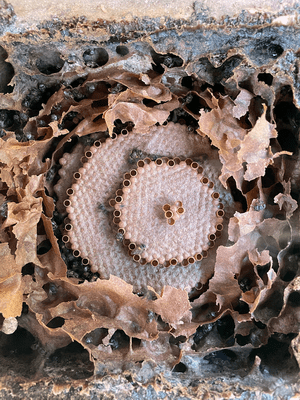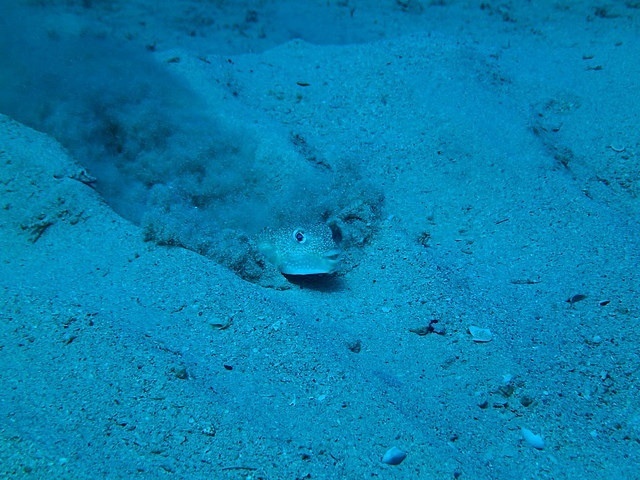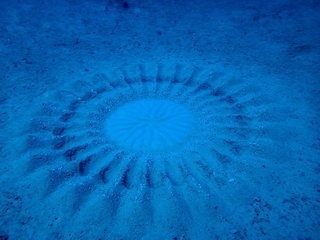Nest mound of Globitermes sulphureus provides a stable indoor climate
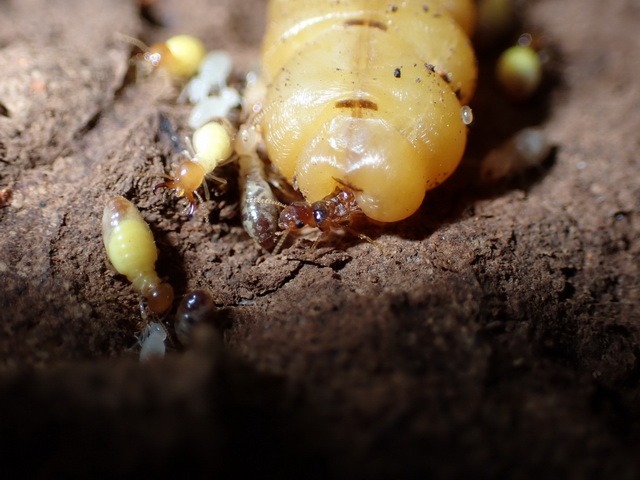
Periods of severe drought, periods of heavy rain: a nest mound of the termite Globitermes sulphureus withstands it all. That is thanks to its three-layered structure, Chun-I Chiu and colleagues show.
The savannahs of Thailand are bone dry in winter while the wet summer season brings an extreme amount of rain: a challenging climate. But the termite Globitermes sulphureus prospers, thanks to nest mounds that protect the colonies in the underground nests beneath them. The mounds persist, the animals neither desiccate nor drown, but always enjoy a pleasantly high humidity level in their nest. This has to do with a clever piece of architecture, Chun-I Chiu and colleagues conclude from various measurements.
Like ants, termites live in large colonies, but they are not related to ants; they are related to cockroaches. A termite colony has a king and queen that produce offspring, and workers and soldiers of both male and female sexes. The queen, that has to produce a huge amount of eggs, is much larger than the other termites.
Stability
The mound above a nest of Globitermes sulphureus may look a little plump, but it is a complex structure. It consists of three layers each of which contributes in its own way to the stability of the mound and to the favourable internal climate in the nest.
The thin outer layer consists of plate-like elements of hard material. The animals make it from sand or soil particles, hence it has the same colour as the soil on which it stands. This layer prevents moisture from escaping from the nest, which is very important during dry periods. Underneath this layer, there is a thicker middle layer of irregularly shaped, stuck-together pieces with cavities in between that are also made of soil particles. This layer is waterproof and can withstand pressure, for example when raindrops hit it. It makes the mound robust.
The inside of the mound, the third layer, clearly differs from the outer layer and the middle layer. It is filled with rounded, smooth pellets in which a lot of fibrous organic material is incorporated, such as cellulose from plant remains. This layer is redder in colour than the other two, and it is the most porous one. Like a sponge, it absorbs water vapour that the termites exhale, holds it and releases it at a low rate. This layer forms a water reservoir with which humidity can be maintained at a high level.
Repair
Has the mound to be repaired after damage, the termites work from the outside inwards. Within a few hours, they are fixing the outer layer, after weeks the outer layer and middle layer are ready. The repair of the inner layer takes more time. The researchers think that this is because the animals must collect material that is less easy to find.
Willy van Strien
Photo: Queen of Globitermes sulphureus in nest. © Chun-I Chiu
Source:
Chiu, C-I., K. Attasopa, S. Wongkoon, Y. Chromkaew, H. Liao, K-C. Kuan, P. Suttiprapan, I. Guswenrivo, H-F. Li & Y. Sripontan, 2024. Three‐layered functionally specialized nest structures enhance strength and water retention in mounds of Globitermes sulphureus (Blattodea: Termitidae). Environmental Entomology, online 9 October. Doi: 10.1093/ee/nvae093
